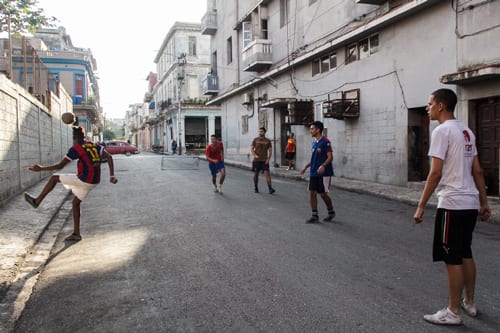The Stealthy Transformation of Cuban Sports
Yenisel Rodríguez Perez

HAVANA TIMES – Cuba’s National Sports, Physical Education and Recreation Institute (INDER) is slowly but systematically dismantling its role as a socializer of sports and focusing its energies on the restoration and strengthening of its commercial and industrial infrastructure.
The INDER has completely abandoned hundreds of sporting facilities, many of which were once the basic infrastructure of sporting activities at the municipal and neighborhood levels. This contrasts with the emergence of sports with a markedly cosmopolitan and middle-class status, associated to a certain socio-cultural elitism.
Behind it is the legendary slogan it upheld for more than fifty years: “Sports, a people’s right.” It would seem to be preparing other phrases, closer to advertising in spirit, something along the lines of: “Sports aren’t free.”
Here, I won’t be condemning the government’s lack of political will to maintain the social initiatives it once undertook as an essential, populist task. This is rather a humble invitation to reflect on the nefarious consequences stemming from the dismantling of social infrastructure that is underway in our country.
Cutbacks to the welfare agenda – today of a neoliberal nature – will come at a high social cost to a society that has been drained of autonomy. Over history, we have been coerced into subordinating our life strategies to State subsidies and gratuities, mechanisms that are now being dismantled without any visible replacements or alternatives.
In our society, practicing sports is becoming a private sector practice, where individuals do what they can, always in pursuit of the First World standards sold in the national market (in which the INDER occupies a privileged position).
The collective and nostalgic recollections of rag-ball, barefoot games that many generations are still proud of is now being stigmatized as a sign of poverty and marginality.
In this way, sport ceases to be a gathering place and becomes established as hierarchical space, a process all the more magnified by the material demands that the majority of people are unable to meet.
Sport as a popular, mass practice, if that ever actually existed, is a thing of the past. Not much is actually being lost: social projects promoted by governments are always designed to become obsolete shortly after fulfilling their role as forms of political publicity.
Here, populism and social programs have already outlived their usefulness, particularly after Fidel Castro’s retreat from the limelight.
Till that time, the inertia of the great leader’s traditional authoritarianism and messianic egocentrism resulted in a low-profile, but stable, maintenance of sporting policies that were sustained as a collateral benefit of authoritarian domination.
Today, we don’t even have that. What’s left is the promotion of sports as an industrial, consumerist practice, with some crumbs of formal freedom thrown into the mix.






Social distribution is all fine and good, but some one has to pay the bills. Incentive is just a reality in being productive.
In other words, the Castro regime has spent all its ‘sugar daddy’s money’ and is forced to try to live within their means. The Castros are hoping like hell that the US will bail them out. We probably will but at what price?